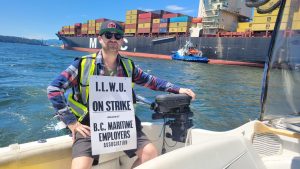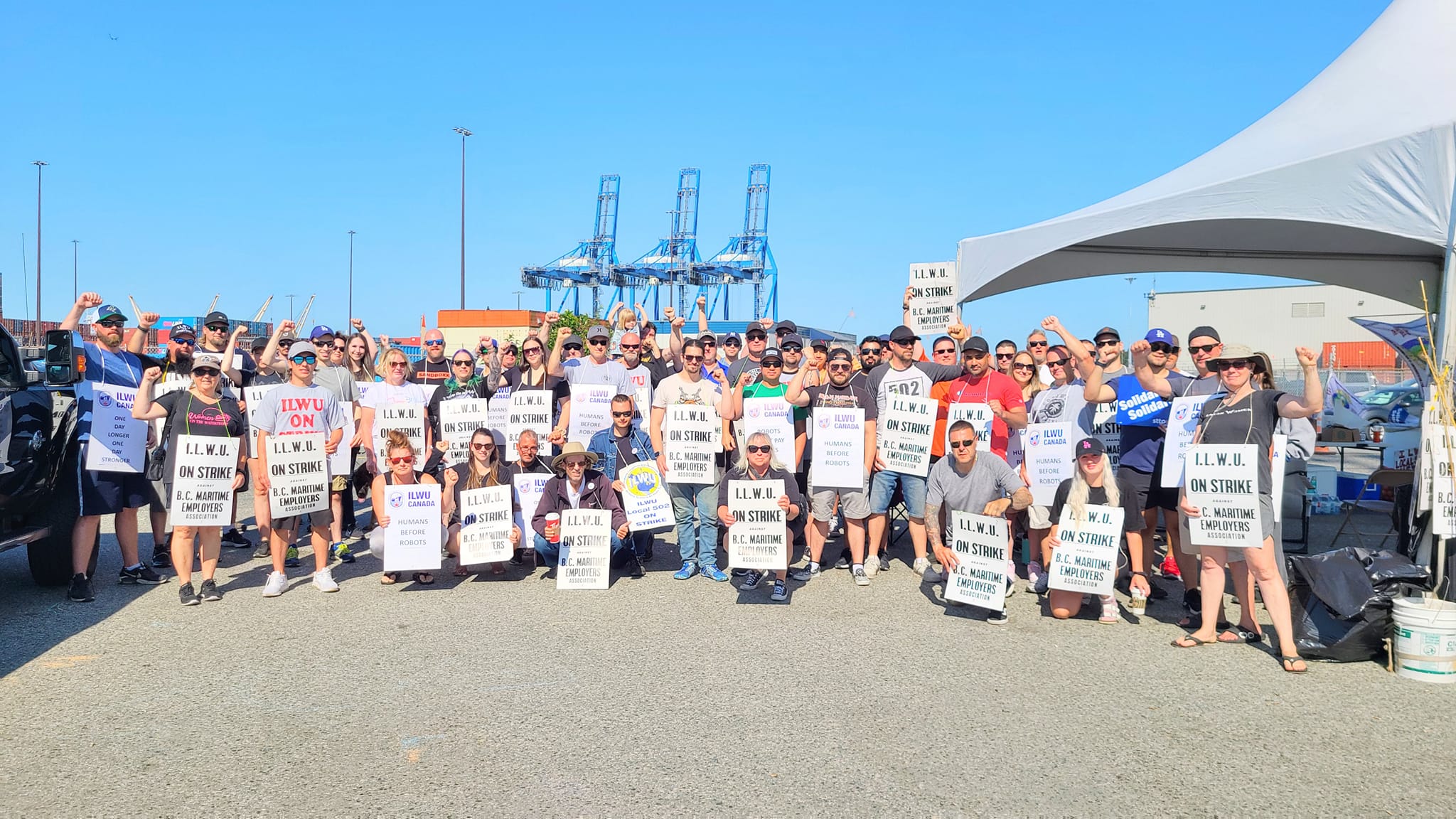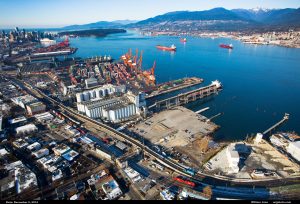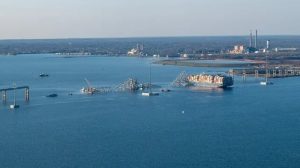A strike by longshoremen on Canada’s West Coast entered its third day today as negotiations in the presence of federal mediators resumed between maritime employers and the union representing 7,400 terminal and port workers at 29 ports in British Columbia.
The strike will potentially have a significant domino effect on the Canadian economy and trade with Asia given the fact that an estimated one quarter of Canada’s imports and exports flow through the region’s ports – mainly Vancouver and Prince Rupert, the first and third-biggest ports in the country. This trade flow represents about $800 million worth of cargo each day.
The International Warehouse and Longshore (ILWU) Canada had given the required 72-hour notice of a strike call last Wednesday unless negotiations produced an agreement with the BC Maritime Employers Association by the July 1 deadline. The region’s dockers have been without a contract since March 31, 2023. Key issues revolve around port automation, contracting out, and wage increases adapted to the dramatic rise in the cost of living.
Given the apparent lack of progress in resolving issues and the relatively moderate cargo volumes in a low-growth economy, analysts do not anticipate an imminent breakthrough in the negotiations.
Leading business associations have urged the government to directly intervene by going as far as to introduce back-to-work legislation and mandatory arbitration if the work stoppage drags on – as occurred in 2021 to end a prolonged labour conflict at the Port of Montreal.
But Labour Minister Seamus O’Reagan said over the weekend the two parties were still at the table, adding that the Trudeau government “cannot emphasizes this enough – the best deals for both parties are reached at the table.”
Rob Ashton, President of ILWU Canada, underlined on Sunday how much the dock workers had made sacrifices during the pandemic and warned the federal government “to stay out of our business. If the BCMEA gets their way, and their way is to let the government make this collective agreement for them, there will never be labour peace on the waterfront.”
For its part, the BCMEA has affirmed: “Our bargaining committee has made repeated efforts to be flexible and find compromise on key priorities, but regrettably, the parties have yet to be successful in reaching a settlement.”
Responding to the waterfront crisis, the Port of Vancouver has sought to mitigate any backlog by adjusting anchorage procedures by the ocean vessels. The anchorages in the inner harbour, where the DP Centerm and GCT Vanterm container terminals operate, have been limited to 48 hours. For the moment, average container dwell times have remained under five days.

For its part, the BCMEA stated: “Our bargaining committee has made repeated efforts to be flexible and find compromise on key priorities, but regrettably, the parties have yet to be successful in reaching a settlement.”
On the heels of concerns expressed late last week by the Canadian Chamber of Commerce and other industry associations, the Canadian Federation of Independent Business evoked the “serious consequences for our economy and our small businesses. Port operations must remain fluid so as not to exacerbate supply chain disruptions and put further pressure on costs, at a time when we are still facing high inflation. CFIB is calling on the government to ensure that port operations are maintained, and that negotiations continue in order for both parties to find an agreement as quickly as possible. While it is good news that grain vessels will continue to be serviced and that the union intends to service cruise ships during the strike, it’s clearly not enough.”
Fertilizer Canada has urged the two parties “to promptly come to an agreement to avoid a devastating shutdown of the West Coast Ports. The Port of Vancouver is especially critical to overseas shipments of potash fertilizer. The transportation of fertilizer and its application rely on careful timing and any interruption can jeopardize crop yields and global food security.”
According to the agri-food industry association, Canada exports 95 per cent of its potash production to global markets – with the majority flowing through the Port of Vancouver. Potash is reportedly second only to gold in export value, contributing about C$5.52 billion to GDP annually. Over 75 countries rely on Canadian fertilizer. Canada is the top producer of potash fertilizer in the world followed by Russia and Belarus.
(Photos of striking longshore workers from ILWU Canada)





